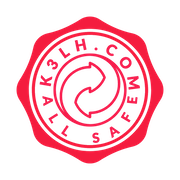10 Laboratory Safety Precautions Every Scientist Should Know 🧪🔬
As a scientist, working in a laboratory can be an exciting and fulfilling experience. However, it can also be dangerous if you do not take laboratory safety precautions seriously. The risk of exposure to hazardous materials, explosions, fires, and other accidents is a real concern. That’s why we’ve compiled a list of 10 laboratory safety precautions that every scientist should know to ensure a safe and productive laboratory environment.
1. Wear Proper Protective Gear
One of the most basic laboratory safety precautions is to wear the appropriate protective gear. This includes lab coats, safety glasses, gloves, and closed-toe shoes. The type of protective gear required may vary depending on the specific experiment or procedure being performed. Always check with your supervisor to determine what protective gear is necessary before starting any new project.
2. Know the Chemicals You are Handling
Before working with any chemicals, it is essential to know their properties, hazards, and safe handling procedures. Always read the label and the Safety Data Sheet (SDS) before using any chemicals. If you are unsure about anything, ask your supervisor for guidance.
3. Keep the Laboratory Clean and Organized
A clean and organized laboratory is a safe laboratory. Keep all work surfaces, floors, and equipment clean and free of clutter. This will help prevent tripping hazards and reduce the risk of chemical spills or fires.
4. Use Proper Ventilation
Many laboratory chemicals can be hazardous when inhaled. Proper ventilation is necessary to prevent the buildup of toxic fumes. Always work in well-ventilated areas and use fume hoods when necessary.
5. Handle Glassware with Care
Glassware is fragile and can easily break, causing injury or chemical spills. Always handle glassware with care, and inspect it for cracks or chips before use. Dispose of broken or damaged glassware in designated sharps containers.
6. Label Everything
Proper labeling is critical in a laboratory setting. All chemicals, solutions, and equipment should be clearly labeled with their contents and any hazards. This will help prevent accidental ingestion or exposure to hazardous materials.
7. Use Proper Storage Techniques
Improper storage of chemicals can lead to accidents and chemical reactions. Always store chemicals in the designated areas and follow the guidelines for storage temperature and conditions. Keep incompatible chemicals separate to prevent accidental mixing.
8. Never Work Alone
Working alone in a laboratory can be dangerous. If an accident occurs, there may be no one around to provide assistance. Always work with a partner or in a group, and notify someone outside the laboratory of your whereabouts.
9. Report All Accidents and Near-Misses
Reporting accidents and near-misses is essential for improving laboratory safety. Even minor incidents should be reported, as they can provide valuable information for preventing future accidents.
10. Know the Emergency Procedures
In case of an emergency, it is essential to know the proper procedures for evacuation, first aid, and contacting emergency services. Familiarize yourself with the emergency procedures for your laboratory and keep emergency contact information readily available.
Tutorial of 10 laboratory safety precautions
As a scientist, it is your responsibility to ensure a safe laboratory environment. Here’s a quick tutorial on the 10 laboratory safety precautions you should always follow:
1. Wear the appropriate protective gear.
2. Know the properties and hazards of the chemicals you are handling.
3. Keep the laboratory clean and organized.
4. Use proper ventilation to prevent the buildup of toxic fumes.
5. Handle glassware with care to prevent injury and chemical spills.
6. Label everything to prevent accidental exposure to hazardous materials.
7. Use proper storage techniques to prevent accidents and chemical reactions.
8. Never work alone in a laboratory.
9. Report all accidents and near-misses to improve laboratory safety.
10. Know the emergency procedures for your laboratory.
Tips of 10 laboratory safety precautions
Here are some additional tips for following the 10 laboratory safety precautions:
1. Keep a first aid kit readily available in case of an accident.
2. Always dispose of chemicals and hazardous waste properly.
3. Use caution when heating or cooling chemicals to prevent explosions.
4. Do not eat or drink in the laboratory to prevent accidental ingestion of hazardous materials.
Question and Answer of 10 laboratory safety precautions
Question 1: What should you do if you spill a chemical in the laboratory?
Answer: Immediately alert others in the laboratory, evacuate the area if necessary, and follow the proper procedures for cleaning up the spill.
Question 2: Why is it important to wear protective gear in the laboratory?
Answer: Protective gear helps prevent exposure to hazardous materials and reduces the risk of injury.
Question 3: What should you do if you are unsure about the proper handling of a chemical?
Answer: Always ask your supervisor for guidance before handling any chemicals you are not familiar with.
Question 4: Why is it important to report all accidents and near-misses?
Answer: Reporting accidents and near-misses helps identify potential hazards and improve laboratory safety.
Conclusion of 10 laboratory safety precautions
Laboratory safety is essential for the well-being of scientists and the success of their experiments. By following these 10 laboratory safety precautions, you can help ensure a safe and productive laboratory environment. Always stay vigilant and never take shortcuts when it comes to laboratory safety. Remember, safety first, science second!
Recommendations:
- Safety Inspection Report Format Safety inspection report forms are forms that are used by professionals to report on the kind of safety violations if there are any of certain establishments by conducting a thorough…
- Food Safety Inspection Checklist Template Food safety checklists templates. You can access our templates below. Vehicle Safety Inspection Checklist Form Car Maintenance Tips Food safety checklists form the basis for a food safety system and…
- Safety Precautions At Home Its vitally important to take safety precautions when working with electricity. Making simple changes in household activities or your environment may create a safer home. Top 10 Home Fire Safety…
- Get PPE Easily with a PPE Vending Machine PPE Vending Machine. Personal Protective Equipment (PPE) is an essential component for the safety of many individuals. It provides the necessary protection to ensure that employees and individuals are safe…
- Site Safety Inspection Template Construction site inspection checklist templates are provided here for your convenience. It can be completed in a single inspection or over a series of shorter inspections. Construction Safety Inspection Checklist…
- Safety First Slogan One of the major ways. 167 catchy and funny safety slogans for workplaces 2020 find the best catchy safety slogans for your workplace stop press. Labels Safety Slogans A big…
- Safety Slogans For The Workplace Promoting safety is an efficient way to keep up an employees awareness against safety. 10 toes if you are not safe who knows. Safety Slogans In The Workplace Howarths Hr…
- Workplace Safety Funny Safety Quotes 500 of the best workplace health and safety slogans. Dec 17 2015 explore safetycompanys board safety quotes followed by 132 people on pinterest. 57 Funny Safety Slogans Funny safety slogans…
- Vehicle Safety Inspection Form I cant find it anywhere on the website or through the app to download and p. This form must be filled up by the driver which will serve as a…
- Safety Quotes For The Workplace Funny In this post we are going to share with you a list of 57 funny safety slogans. Researchers reveal the top 10 most effective safety slogans ever click here. Funny…
- Safety Quotes Funny Try being a little creative and your message gets across. A big thank you to all of our readers who have contributed some excellent. Funny Workplace Safety Pictures Safety Slogans…
- Safety Poster While we are talking about safety poster, most of us need to be a lot more familiar with the safety element of our lives.
- Safety Slogansquotes Safety sayings and quotes. Below you will find our collection of inspirational wise and humorous old safety quotes safety sayings and safety proverbs collected over the years from a variety…
- Safety Slogans Posters The ripple effect of a serious injury or incident. A clean floor everyday keeps lost days away. Safety Slogans Stickers Safety Poster Thiruvagoundanur 27 mar 2019 explore abernathy9155s board safety…
- Safety Goggles Uses Essentially goggles are safety glasses that fit tightly to the eye often with suction and are secured with a strap that goes around the back of the head. This pair…
- Discover Job Hazard Analysis Examples to Improve… Job Hazard Analysis Examples. Every workplace has its own set of safety standards and procedures. But it can be difficult to know which safety protocols are most effective, and which…
- Slogan Poster Electrical Safety If you fail to follow electricity safety the results can be shocking. Lab safety safety first safety and security home safety child safety safety slogans safety posters electrical safety electrical…
- Electrical Safety Precautions In Laboratory Most incidents are a. Electrical safety in the laboratory. Safety Precautions In Electric Lab English Precautions can be employed when working in the laboratory to avoid electric shock and electrical…
- Workplace Safety Inspection Checklist Template Use our professionally designed workplace safety inspection checklist template that you can download instantly. After you have used it a couple of times you may wish to modify it so…
- Funny Electrical Safety Posters Top ten funny electrical shorts an electrical joke funny electrical safety cartoon terrifying electrics funny health and safety pictures safety powerpoint presentation sponsored links electrical safety pictures lightning nearly. People…
- Osha Safety Meeting Topics Oshas safety and health topics pages provide regulatory and enforcement information hazard identification and controls as well as best practices and other resources to assist employers workers and safety and…
- Health And Safety Site Inspection Template Where a health and safety representative has drawn your attention to the findings of an inspection they have. Health and safety annual audit action plan. Form 007 Hse Weekly Inspection…
- Health And Safety Inspection Report Template Use for office health and safety audits. Add a badge to your website or intranet so your workers can quickly find answers to their health and safety questions. Safety Report…
- Huge Safety Slogans Complete List Made Your Safety… Browse through the safety slogans in 2022 suggestions below. The safety slogans is one of Safety Communication method which successful of safety campaign was measured. So Safety Slogans is so…
- Safety Plan Worksheet No portion of the safety plan template may be reproduced. Displaying all worksheets related to safety plan. Safety Plan Worksheet Therapist Aid I can sometimes anticipate when i need to…
- Safety Wear Logo Hivis supply is the leading online retailer of high visibility gear and apparel. Select from a wide variety of safety jackets high visibility t shirts ansi sweatshirts safety raingear and…
- Safety Inspection Checklist Template It covers the owner and vehicle details including the complete name of the vehicle owner home address email club membership if there is model chassis no engine no make year…
- Safety Quotes For The Workplace 2019 You can use them in different ways at your workplace to get your point across. The use of silly and meaningless safety language matters it creates a distraction and delusion…
- Safety Inspection Report Template In line with this we have here safety report templates that you can download and use. Neglecting such reports could bring out legal and administrative consequences. Safety Report Templates 16…
- Fire Safety Inspection Report Sample Abss high tech sweater ltd. Was surveyed for fire safety on 10052016 by the accord inspection team. 41 Inspection Report Examples Samples Pdf Word Pages Examples This summary identifies the…
Advertisement
Scroll to Continue With Content




